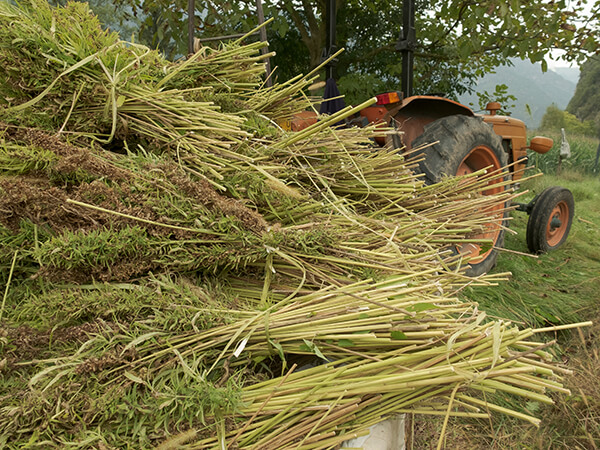Hemp
Hemp or Cotton; Which Fabric is More Sustainable?
It probably doesn’t come as much of a suprise that here at Kaya, we’re passionate advocates for hemp and all that it can provide for both humankind and the planet upon which we live. That passion was born from extensive research into what hemp can do, what it can’t do, and how the products made from it compare to similar options that currently dominate the marketplace.
Perhaps one of the greatest and large-scale opportunities for hemp to demonstrate its utility is in the area of textiles. At nearly a trillion dollars, the textile industry is a major force in worldwide commerce and an area of focus for anyone concerned about climate change, considering that the fashion industry beats out the combination of air travel and shipping via boat in terms of carbon emissions.
As it stands today, cotton is a major player in the textile industry, especially in the United States where we lead the world in cotton exportation and are one of the top three global producers. This no doubt comes with a high cost in terms of environmental impact, so do we have a better (and recently legalized) alternative? Spoiler alert: absolutely.
Side by Side: Cotton vs. Hemp
Now that industrial hemp is once again legal and being used to produce a long list of useful items, we’re here to look at how it compares to cotton and why it’s the superior crop in many ways.
Currently, about 20 million tons of cotton are produced around the world annually, accounting for over 30% of fiber requirements. What impact on resources would switching to hemp have?
Land Use:
Cotton requires twice as much land per ton of finished textile compared to hemp, so we could meet the same demand while saving half of the acreage currently used (or would be used in the future). Hemp also returns nutrients to the soil from which it grows and sequesters carbon dioxide out of the air, two sustainably useful traits that aren’t shared with cotton.
Water Consumption:
For each kilogram of usable fiber, cotton requires over 10,000 liters of water while hemp needs 2,123 liters according to a 2005 study. Other studies have hemp’s water consumption at 50% of what cotton needs, so hemp is the clear winner even granting cotton the more generous estimates. Cotton is a thirsty crop!
Pesticides Required:
25% of the planet’s pesticide use (about 50% in the U.S.) is used on conventional cotton fields while hemp is naturally pest-resistant. Hemp stalks can also be grown closer together than cotton plants, another deterrent for pests and weeds who prefer to gather in a spacious environment.
Lifespan:
Fresh off the hanger, it’s pretty obvious that cotton feels more comfortable to wear than hemp does. Though hemp does soften with every wash, it takes longer to “break-in” than cotton, but that’s actually a good thing because of how durable it is. Plus, hemp is naturally antibacterial so it won’t develop mold or mildew like cotton can when left sitting for a long period of time.
Versatility:
Aside from clothing, industrial hemp can be utilized for plastics, biofuel, paper, wood and building materials, plus its seeds can be used to make oils, milk, protein powders, and healthy snacks. Though cotton can be used in a few of the same ways, the list of its potential byproducts isn’t nearly as long or diverse.
Affordability:
Hemp is currently less available and therefore more expensive than cotton, but now that it is once again legal to grow in the U.S., the price has been steadily dropping – a trend that should continue with every yield.
So, What’s Next?
In the age of conscious consumerism and a heightened awareness of what environmental impacts are attached to our purchasing decisions, we truly believe that by using our dollars to vote for hemp over cotton it could revolutionize multiple industries and create a more sustainable future for our planet. If you’re interested in learning more about what hemp is capable of, please visit us in our Phoenix storefront, join our mailing list, or follow us on social media to stay updated on upcoming educational events.

